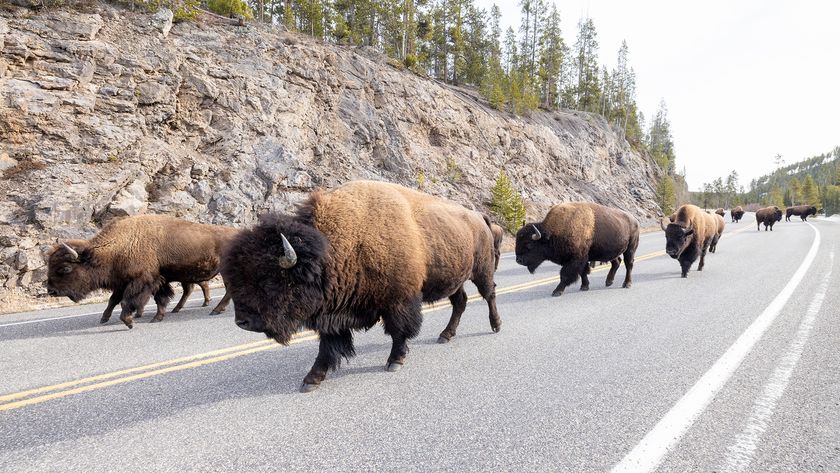Image Gallery: Red Squirrel Moms and Babies
Bigger Is Better For Baby Squirrels

Bigger squirrels have a better chance of staking out an exclusive territory. Juveniles that don't manage to acquire a territory before their first winter do not survive, researchers say.
A Mother's Gift

When the forests are crowded, pregnant squirrels boost their stress hormone levels and have faster-growing offspring.
Noisy Forest
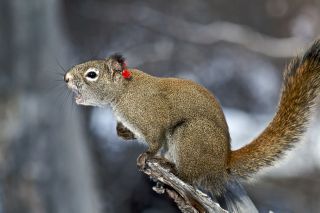
Red squirrels know if the forest is crowded if they hear more territorial vocalizations from their peers, known as "rattles."
Rattle
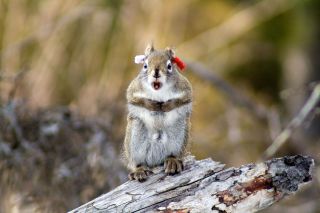
A North American red squirrel in the Yukon, Canada emitting a territorial vocalization called a “rattle”. The colored pipe cleaners are threaded through ear tags to facilitate individual identification.
Mom Carrying Pups

Mothers carefully carry their pups in their mouths soon after a nest disturbance.
Day-Old Pup

A juvenile North American red squirrel that is about 1 day old.
Careful!
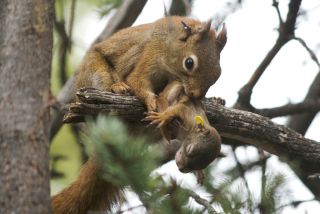
A female moving her pup from one nest to another
Sign up for the Live Science daily newsletter now
Get the world’s most fascinating discoveries delivered straight to your inbox.
Prized Spruce Seeds
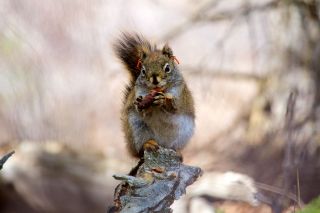
A North American red squirrel in the Yukon, Canada consuming the seeds from a white spruce cone.

